A hundred years ago, a man died, and in doing so set in chain a series of events that was to see a large island off the coast of Essex sealed off from the general public, and it remains so to this very day.
Except, that you can be invited in by the few remaining residents who are allowed to farm there — or once a month, we mere citizens are permitted to travel along one road to see just one building, and then leave again.
For this entire island, the size of London’s zone 1 travelcard is a military testing range.
The island’s only village had a church, which has long since closed down, and the local pub also, yet what draws people to this isolated hamlet in the middle of nowhere is a museum.
A local museum of local history in the former school.
Although the island has been farmed for centuries, for the land is very fertile, it was in 1855 that the War Office found that the vast mud flats alongside the island were perfect for test firing munitions into.
Although the War Office slowly bought up bits here and there of the island, the largest land owner, Alan Finch refused to sell. He died in 1914, and a year later, his half brother, motivated maybe by patriotism, or money, sold the land. Ever since, the government has extended its ownership to the point that it now owns the entire island, save the since closed down church.
And while around 180 people still live on the island, visitors need to be invited in, and can only access the island via a single military check point some 5 miles from the village.
A couple of years back, I attempted to penetrate that military barrier, but was thwarted. This weekend, along with Tom, a return visit was attempted, this time with bikes to ride the long solitary road to the village.
For while the island is sealed off from casual visitors, once a month the village museum throws open its doors, and anyone who wants to make the journey can do so.
Checking in at the checkpoint, a vastly more cheerful greeting than I experienced last time, and after collecting details, handing over a visitors pass and stern warnings not to wander off the track, two London bloggers on bikes were permitted through the barrier into military lands.
It’s a very curious sensation to be both in the open countryside, yet also fenced in within very strictly controlled barriers. Lots of warning signs line the road, and in places temporary barriers with warnings not to pass if they are down as ammunition firing might be under way.
Although the road is well kept, it is surrounded by farm and marshy wastes, until you come to the only large bridge on the island, which is manned twice per day just in case boats need to come up the river that cuts the island off from the mainland.
After that, it is just a long, very long, slog along a single long road to the eventual destination.
Eventually, delight as the farmland is replaced by a cluster of houses, the very obvious church, and a sign to the local museum.
Even though I had little inkling of what to expect, what was utterly unexpected was a display of classic cars on the nearby field. We had arrived on the annual display by a local car club.
I mean, seriously, what were the chances of that!
However, it’s the museum that was the reason we were here, and what a museum it is. Any local museum would be proud to be its equal, and it soars above them by sheer dint of the difficulty of managing a museum in the middle of a MoD firing range.
As with most local museums of the sort, expect displays from prehistory (a whale bone) through to pre-war agriculture.
Befitting a military location, much is made of the local military connections, and they have their own ROC observation bunker.
Elsewhere, it’s mostly about the people who lived and worked on the island, with a lot of photos and accompanying text to keep us busy for the couple of hours we were in the place.
A London memento had been dug up, and it was evident that a former resident had once paid a visit to the original London Eye back in Victorian times.
Trophies for potatoes and pigeons. Gramaphones for entertainment. Lanterns still in use until the 1950s until electricity arrived. All the paraphernalia of local heritage.
A banner demanding that the locals be protected from Foulness was puzzling, until it turned out to be a protest against plans in the 1970s to turn part of the island into a new London Airport.
A large amount of space is given over to drawings of birds, eggs of birds, and a couple of stuffed birds, for the island is a significant site for nature conservancy, and as we traveled to the museum, some signs warned to drive slowly to help preserve the local wildlife.
Bombs aside that is.
In another room, many people had come to pour over detailed genealogy tables and seek out knowledge of long dead ancestors.
I didn’t really know what to expect when I arrived, maybe a small room in an old building, and a short visit of an hour at best.
The museum is actually two large and overflowing rooms, packed with local heritage, and would be worthy of a visit on its own. However, the sheer difficulty of getting to it, and the uniqueness of the location push it firmly up the rankings into one of my top recommendations if you ever fancy the trip.
And on the day were were there, lots of people evidently had fancied the trip — from the local history fans to the cyclists in the lycra clad uniform of the serious minded amateur seeking an alternative day trip on their velocipedes.
The school has closed down, and the few local children catch an occasional term-time only bus to the mainland, but the school building today probably sees far more activity as a museum than it ever did as a school.
One other unexpected blessing, considering that the village pub has closed down, is that a WI style tea and cake service was on offer, with a permanent queue for refreshments the whole time we were there.
The cottage garden next door is a delightful place for a traditional English afternoon of tea and cake — even when sited in the middle of a military testing range.
I suspect I could have sat there all afternoon, but we very unexpectedly had something else to do that afternoon.
The museum is open on the first Sunday of each month, April to October, 12pm to 4pm, with entry onto the island from around 11:45am. [military checkpoint map]
Entry is free, but donations appreciated. Local fruit and veg may be on sale in one of the rooms, along with booklets, and a cup to add to my collection.
You are best advised to arrive early though, for reasons which I will elaborate on tomorrow.

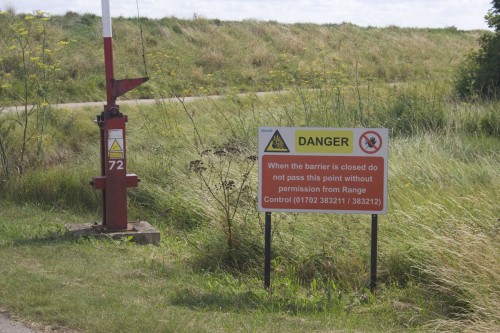
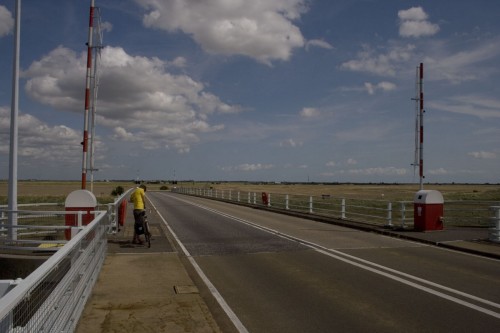
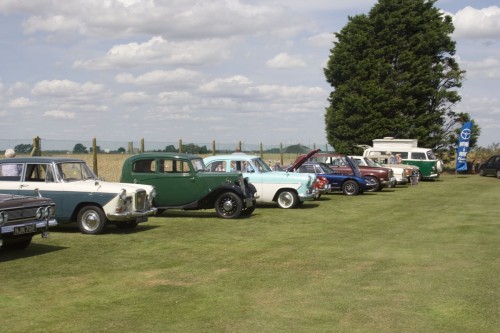
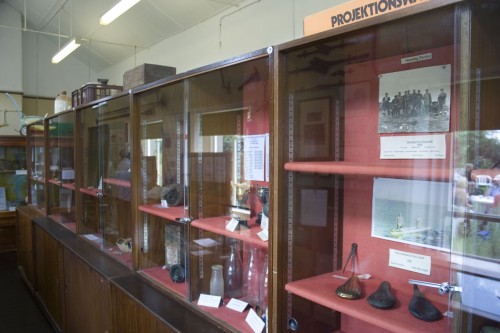
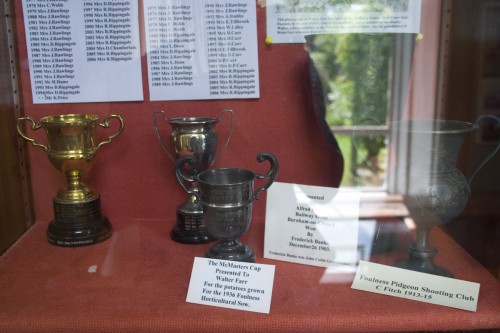
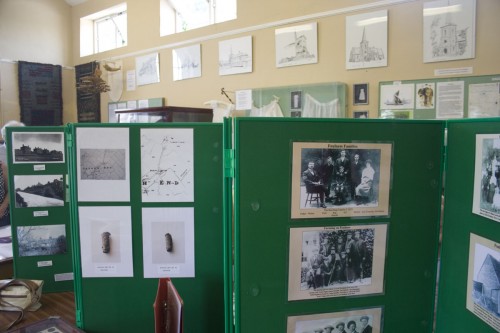

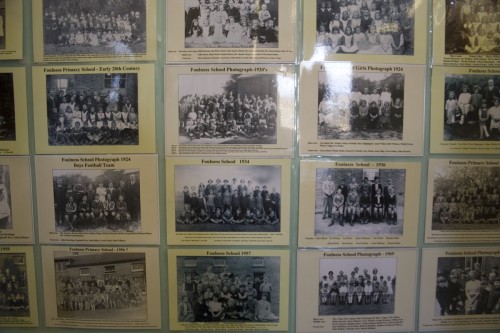
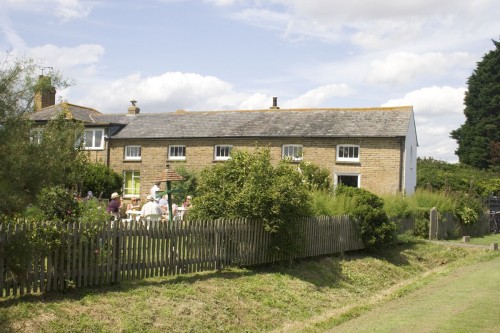






Very sad to hear the pub has closed down, it was a great day out to have Sunday lunch there.
Not as sad as we were, Mark
Hi Ian, great article, I want to visit too – but I don’t think it actually ever says what the name of the island is? Also is the island really only “the size of London’s zone 1 travelcard”? Must feel a bit crowded there! 🙂
I wondered too. Perhaps as a military site its name is classified!
Details are in the links I inserted into the article
Sounds really interesting. I read your 2012 blog with Tom’s comment about hiring a car or taking Boris Bikes. Did you take Boris Bikes on the train into deepest Essex. I really hope you did!
Sadly not this time Veronica. You can spot my battered old steed on the picture of the bridge.
Brilliant stuff – glad you made it, finally. Definitely on my list of museums to go to. Had a day trip to Shoeburyness a few years ago, just for a wander around the town and the beaches. Foulness itself is fascinating, but I’m not sure I’d trust myself to the bridleways – the museum visit sounds far more civilised.
Thanks for this, Ian. I’m reminded of a 1993 trip to the little maritime museum in Falmouth, Cornwall. It was in a little house near the harbor. I see from the web that it is now the National Maritime Museum, Cornwall, and has been moved to a new building. In ’93, it was small, vaguely amateur, and had charming typed labels for everything. It’s probably less charming and more professional now, for better and for worse.
I think you’ll find that the island is called “Havengore Island”
Erm, no – it’s not.